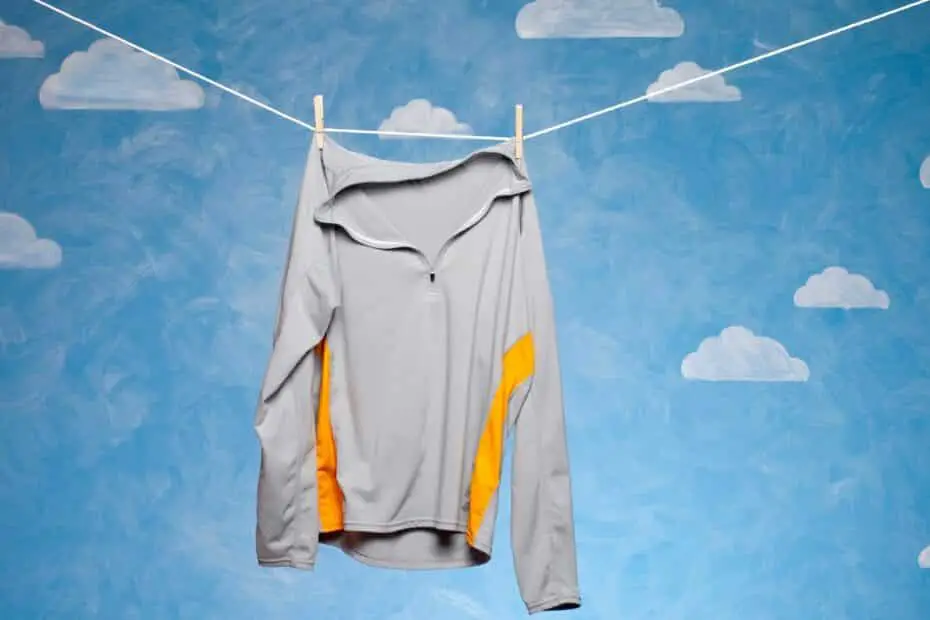It’s basically impossible to shop for outdoor clothing without running into the term “Moisture Wicking”. Every clothing brand has their own version of moisture-wicking fabrics, but they rarely explain the importance. What does moisture wicking mean and why is it important?
Moisture wicking fabric serves two important purposes: it quickly moves sweat away from the the body and dries fast so the fabric won’t get saturated in sweat. It accomplishes these tasks by wicking sweat to the outer surface of the fabric to speed up evaporation. This allows your body to properly regulate its temperature and you’ll be more comfortable in your wet clothes.
Table Of Contents
Moisture Wicking Meaning
Let’s start off by answering a simple question: what does moisture wicking mean? Here’s a simplified moisture wicking definition: moisture wicking fabrics move moisture away from your skin to the outside layer of the fabric. Moisture wicking fabrics have two important jobs: they quickly transfer sweat or rain to the fabrics outer layer, and they also dry out fast to prevent sweat from soaking through the fabric.
You should always wear moisture wicking fabrics when performing any kind of physical activity. It will be far more comfortable since you won’t have to wear sticky damp clothing and it will help your body regulate its temperature. There will be less moisture on your skin, making moisture wicking clothes feel cooler in the summer and warmer in the winter.
A fabrics ability to wick sweat through its surface depends on the permeability and capillary action of the fabric. Permeability is the fabrics ability to transfer water to the outside layer and capillary action deals with the movement of liquid (aka sweat, rain, etc.) through small permeable gaps in the fabric.
I won’t get into the science behind these processes, but some fabrics are better at dealing with sweat than others. When searching for moisture-wicking clothes, stick to synthetic fabrics like nylon or polyester blends and merino wool (cotton is terrible). I’ll explain the pros/cons of each type of moisture wicking fabric in detail below.
How Does Moisture Wicking Work?

You should always try to choose moisture wicking fabric. Moisture wicking fabric draws sweat away from the body, allowing your clothes to dry faster, while improving your bodies ability to deal with heat and cold.
Most experts predict a fabrics “wickability” by measuring capillary pressure and permeability. The most important factor is capillary action; the movement of liquids in fabrics occurs through molecular force. Permeability is measured by how well the fabric can transmit moisture through its surface.
Every type of fabric will be a little bit different, but the type of material, various aspects within the material, and the clothing design will determine this. There are lots of aspects that affect moisture wicking, but lets break it down into the basics.
- Construction Of The Yarn: Moisture wicking yarn shouldn’t be round. Most companies use a butterfly-like shape or cross-pattern to increase the space/channels between the thread weave. This improves the capillary action by creating little tubes for sweat to flow through the fabric.
- Knitting Structure: Most moisture wicking garments use a one way knitting pattern. In theory, water should only move in one direction through the fabric, but it can become overly saturated in heavy rain. So the outside of the fabric will be moisture-resistant without impacting breathability.
- Chemical Wicking Finish: You can improve the wicking properties of traditional fabrics by treating them with hydrophilic chemicals. The additive is put into the dye to improve wickability of fabrics that usually aren’t good at dealing with moisture. It’s usually found in cotton “Dry-Max” or “Cool-Max” style fabrics, but the finish will eventually wear away after repeated wash cycles.
- Pattern Style: Some clothing patterns are better at pulling moisture away from your skin than others. Clothing with honeycomb, waffle, and ribbed, style patterns add air gaps/grooves to the fabric. This creates an open gap between your skin and the clothes to speed up evaporation.
What Are The Best Moisture Wicking Fabrics?
When it comes to moisture wicking material, there are two main options. You can choose either lightweight synthetic blends (polyester or nylon), or merino wool. Synthetics fabric is more durable and cheaper, but wool is better at dealing with odors and temperature regulation.
Synthetic Fabrics
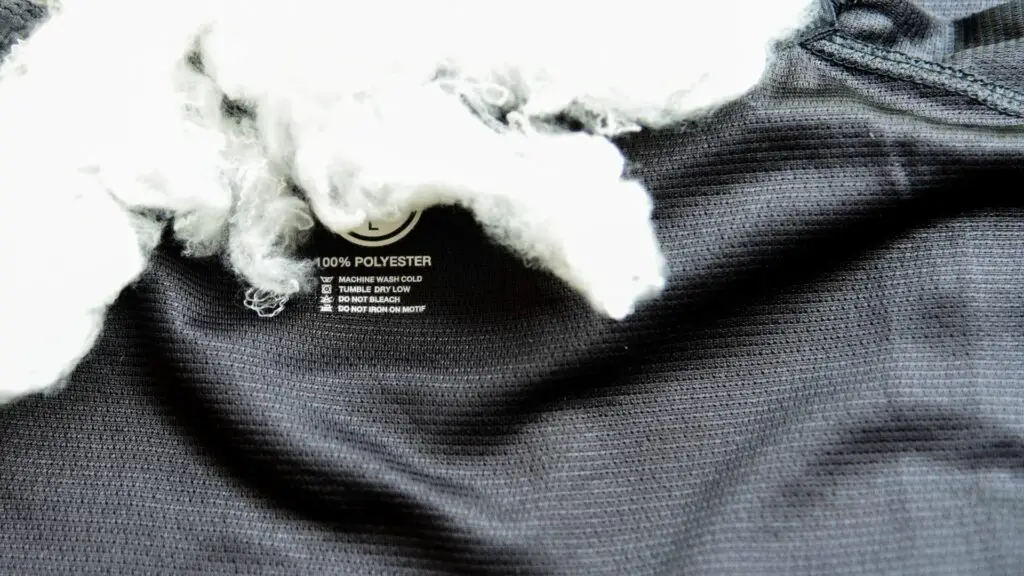
Most fabrics that are designed to wick moisture are made out of some kind of synthetic material. Synthetics are “hydrophobic” which means they’re good at resisting water penetration. They keep exterior moisture out, while wicking away sweat.
Synthetic fabrics have a wide range of marketing terms, but they’re all basically the same. Companies use terms fancy terms like Quick-Dry or Cool-Max to designate any type of fabric blend that wicks moisture. They all have impressive sounding names, but it’s always some type of polyester or nylon blend.
You can usually save some money by going with synthetic athletic shirts or pants. I can walk into any Walmart and find a fast drying gym shirt for like $8. Some options are better than others, but you usually can’t go wrong with a synthetic t-shirt or quick dry hiking pants. They all dry fast and should be fairly durable.
Merino Wool
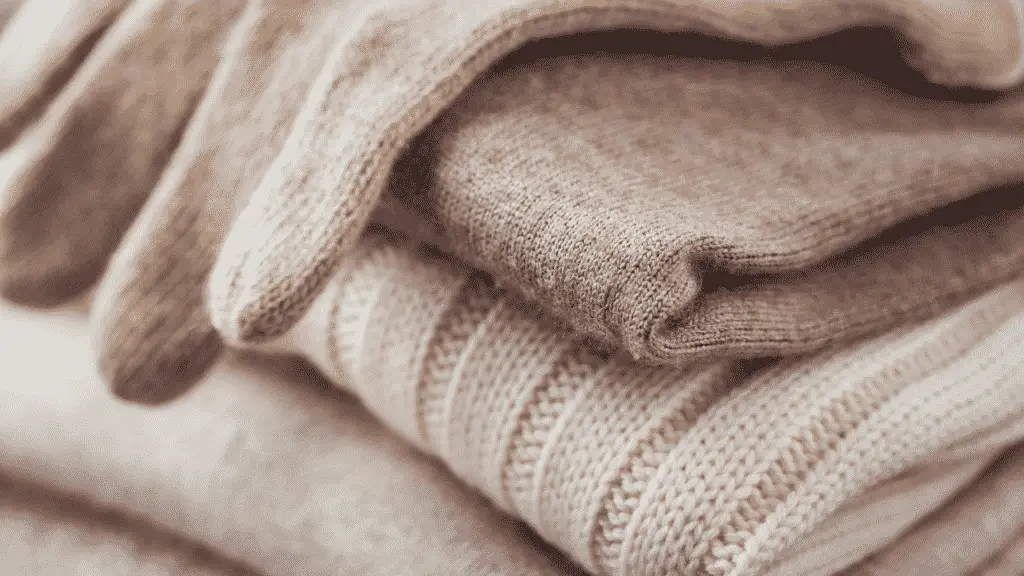
Merino wool is marketed as a breathable moisture wicking material, but it’s an entirely different beast! Wool isn’t like other hydrophobic fabrics. It actually absorbs a small amount of liquid into the natural fibers.
That sounds like a bad thing until you realize that wool can absorb 35% of its weight in water without feeling wet. Wool has much longer fibers than synthetics so there’s a larger surface speeding up the drying time.
That’s why fisherman sweaters are always made out of wool. A thick wool sweater can absorb a pound of water and it will feel completely dry to the touch. It will be a little bit heavier and take longer to dry, but it will feel completely dry.
Wool also has antimicrobial properties so there’s no bacteria buildup after a long day hiking or exercising. You can sweat like crazy without any smell! Wear the same pair of wool socks for days and they won’t stink.
I go over how often to wash merino wool socks and why merino wool doesn’t smell in another post.
It’s also a much better option when it comes to temperature regulation. You can wear wool regardless of the weather. It’s warm in the winter and cool in the summer. It also maintains warmth when wet, making it by far the best option in cold weather.
Cotton Is “Anti-Moisture Wicking”
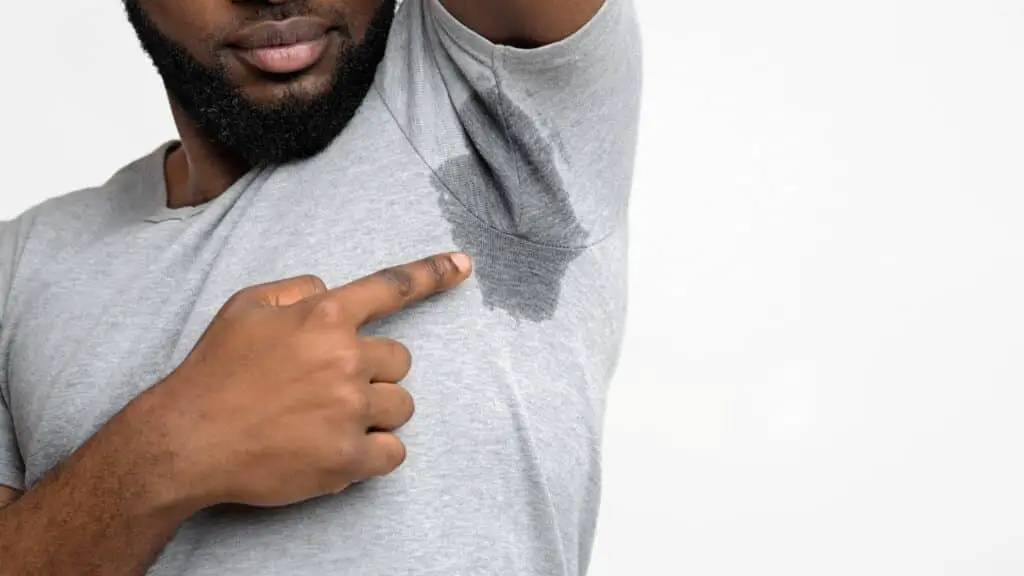
Personally, I would try to avoid cotton clothing in most situations. You’ve probably heard the phrase “Cotton Kills” at some point in your life. There’s a very important explanation behind that saying.
Cotton is notoriously bad at dealing with sweat and water. It’s a highly porous fabric that absorbs water fast and takes forever to dry. This might not sound like a big deal, but it causes temperature regulation issues in both hot and cold weather.
In the summer, sweat trapped against your skin will increase your body heat. Sweat is our bodies main way of dealing with excess heat. It speeds up heat transfer away from your skin, reducing body heat. When sweat gets trapped in cotton clothing, your body will stop sweat production, and quickly overheat.
The exact opposite occurs in freezing temperatures. Trapped moisture will cause heat loss, increasing your risk of hypothermia, frost bite, and other cold weather injuries. You can die in mild 40°-50° temperatures if you’re wearing wet clothing.
I go over this in detail in my other posts: What’s the lowest temperature a human can survive? and Can you freeze to death in your sleep?
What About Fast Drying Cotton?
You may run into cotton based fabrics that are designed to help with sweat evaporation, but I would avoid them. They use hydrophobic chemical coatings to increase drying speed, but it wears away after a handful of wash cycles. You might get a year out of hydrophobic treated cotton, but it will eventually start to absorb water.
Why Do I Want To Draw Moisture Away From My Skin?
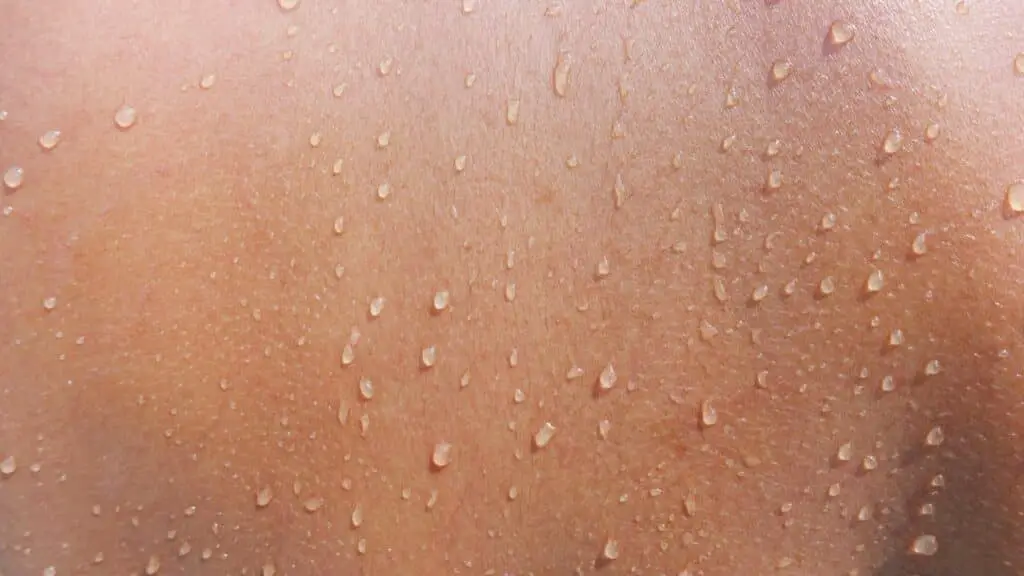
When I first started hiking, I didn’t pay any attention to my clothes. I would go into my closet and choose whatever seemed like it would be comfortable. It didn’t take long to realize the error of my ways.
You should never wear cotton clothing when you’re performing any kind of physical activity. It may not be a big deal in mild weather, but you’ll sweat in the summer and will be hard to regulate body temperatures in colder weather.
My clothes would be completely drenched in sweat by the end of the day, my thighs would chafe, and I’d have blisters all over my feet. All of those issues were solved once I switched over to moisture wicking fabrics.
Most blister and chafing issues are caused by wet fabrics rubbing against your skin. Once you switch over to moisture wicking clothing 90% of problems will go away. You may also need to use a Zinc Oxide based product like Desitin or petroleum/oil based lubricant like Hikegoo or Bodyglide to help with friction caused by fabric rubbing against your skin.
Are There Any Downsides To Moisture Wicking Materials?
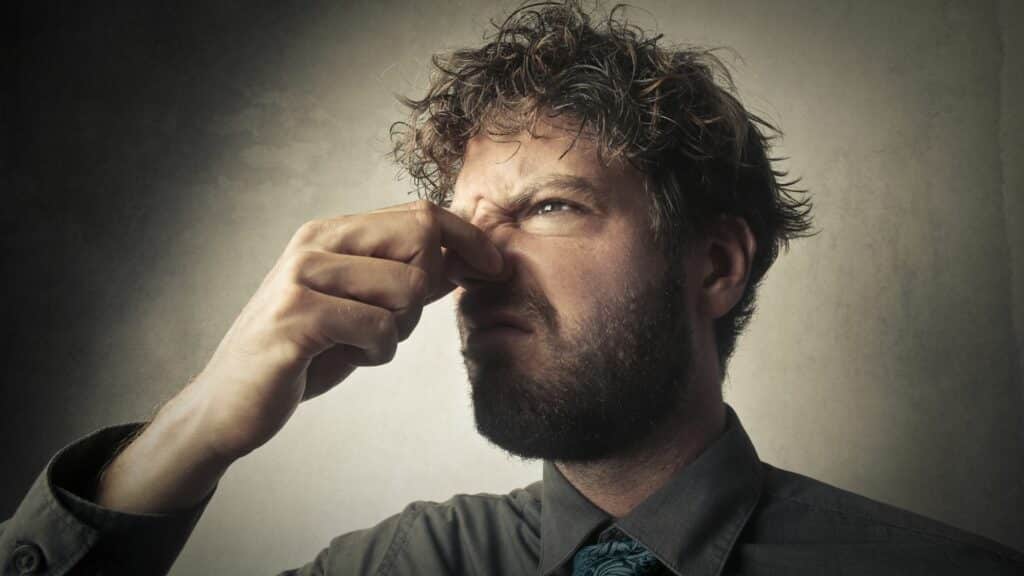
There are loads of benefits to choosing clothes that wick moisture, but are there any problems? Yes, there are a few issues, but they’re not that big of a deal. The two primary problems are the smell of sweaty synthetic materials and durability of wool.
Synthetics can get downright funky smelling after a long day of sweating. They materials are great at dealing with sweat and water, but your left with body oils which lead to bacteria growth. It won’t take long for a synthetic shirt to start smelling nasty.
Merino wool has natural antimicrobial properties so you won’t have to deal with nasty odors. You can wear the same pair of wool socks for days and it shouldn’t smell. If you ignore the high price tag, the only problem with wool is durability.
You need to take care of your wool clothing. Wool is fairly durable when you’re wearing it, but you need to take special precautions when you need to wash it. Wash wool in cold water to prevent shrinking, use gentle wool detergent (my favorite), and hang it up to dry. Most people prefer to hand wash wool, but you can run it on the gentle cold setting in the washer.
When Should I Wear Moisture Wicking Fabric?
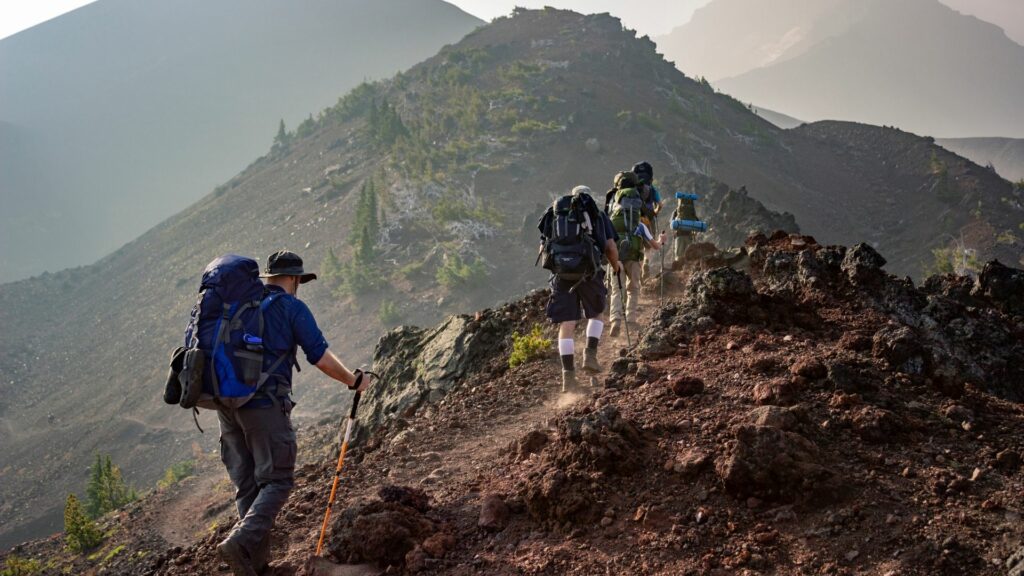
You should wear moisture wicking materials whenever you’re doing any kind of physical activity or there’s a chance of rain/snow. I almost always wear moisture wicking layers! They help deal with sweat in the summer, reduce water saturation from rain in the spring/fall, and help regulate body temperature in cold weather.
I recommend wearing merino wool socks (my favorite), synthetic or merino wool underwear (my favorite), synthetic hiking pants, and some kind of synthetic shirt. You will need to wear an insulated middle layer and waterproof/windproof outer shell layer in cold weather.
Merino wool is by far the best choice when it comes to dealing with sweat/rain. It can absorb 35% of its weight in water without feeling wet, comfortable in wet cold/hot environments, and it usually eliminates blister and chafing issues. The only problem with wool is the cost (I like Smartwool), but there are budget options available (Merino.Tech and Meriwool).
Synthetic fabrics also work, but they’re not as good at preventing blisters/chafing. They’re great at pulling moisture away from your skin and dry fast, but they have issues dealing with excessive moisture. Nylon and polyester dries fast, but it doesn’t take a lot of sweat or rain to feel wet (unlike wool).
Check out my ultimate guide to camping in the rain!
Choosing Moisture Wicking Clothing For Spring, Summer, and Fall
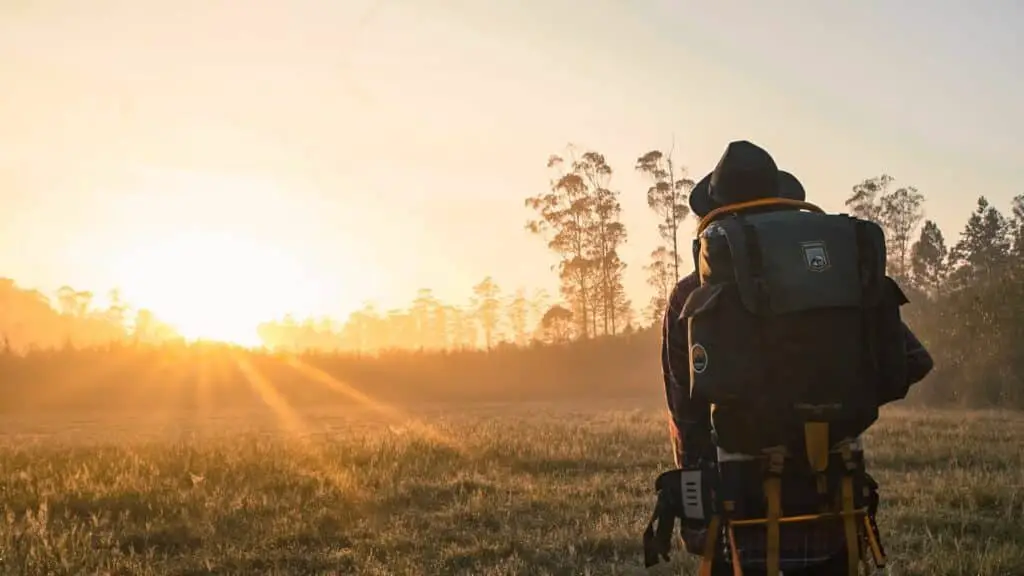
Dealing with sweat and rain will be your primary issue in the summer, spring and fall. Choose a combination of synthetic materials and merino wool. I’ve been slowly trying to switch over to merino wool clothing, but it can be expensive.
Start by purchasing merino wool socks and underwear since that’s where most chafing/blister issues occur. You can find merino wool socks and underwear for like $15-$20. I like Smartwool Socks and Underwear, but Meriwool and Merino.Tech are a cheaper option.
If you’re on a tight budget, go with synthetic socks/underwear. They won’t be as good at dealing with blisters and chafing, but you can usually by a multi-pack for less than a single wool garment.
I would go with synthetic materials for your outer layers shirt/pants. They will be far more durable than merino wool and synthetic fabrics should be cheaper. You can go with a merino wool shirt, but plan on spending $30-$40 or more.
Moisture Wicking Clothes For The Winter
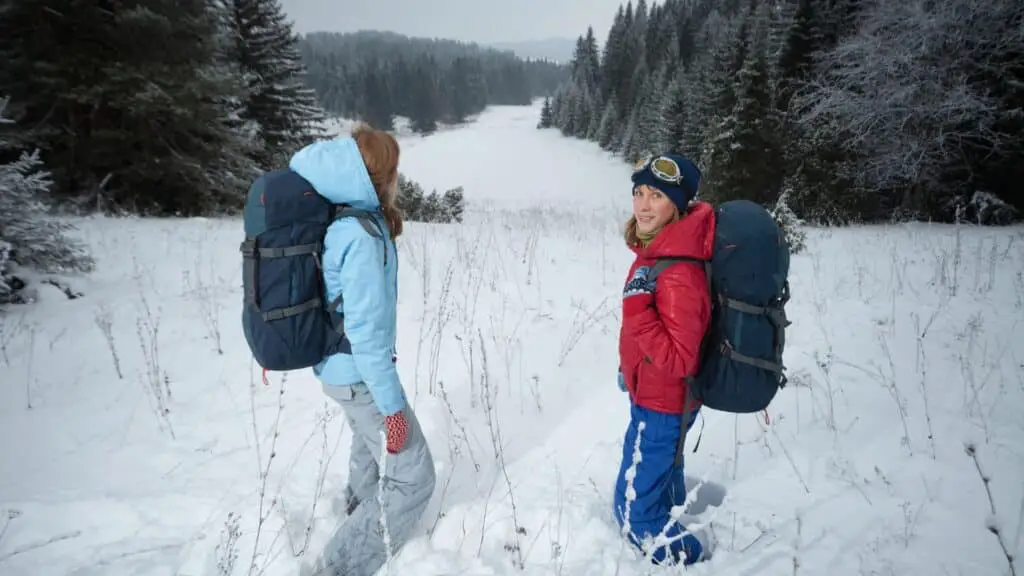
Choosing sweat wicking materials in the winter will be more of a challenge. You will need to wear multiple layers to stay dry and warm in cold weather. Start off by focusing on your winter layering system.
- Moisture Wicking Base Layer: Your base layer is your primary defense against sweat. This is when you need to focus on finding lightweight, breathable clothing, to wick sweat off your skin. I prefer merino wool inner layers, synthetic hiking pants, and a long sleeve wool or synthetic shirt.
- Insulating Middle Layer: Your middle insulating layer traps body heat without trapping sweat. Go with a light/mid weight polyester fleece jacket in moderate temperature and down or synthetic insulation in freezing weather. Never wear a waterproof jacket as your insulating layer. Waterproof fabrics keep out exterior rain/snow, but they also prevent sweat from evaporating.
- Waterproof/Windproof Outer Shell Layer: The outer shell layer deals with exterior moisture and wind. You should only need to wear the shell layer when there’s rain/snow or strong wind. Trying to hike in a waterproof jacket will quickly lead to sweat and condensation issues inside your jacket.
Your base layer serves two purposes: it deals with wicking moisture away from your skin and provides supplemental insulation to trap body heat. It’s hard to perfectly dial in your insulation/shell layers, so you will most likely sweat even in freezing weather.
So you need to choose fabrics that wick moisture away from your skin. Look for moisture wicking layers, like wool and synthetic fabrics. Wool is by far the best moisture wicking material, but synthetics are a cheaper option.
I recommend wool socks (Smartwool Socks), wool long johns, synthetic pants, and a wool or synthetic long sleeve shirt. Your insulating layer should be a polyester fleece jacket and warmer down/synthetic puffer jacket. The outer shell layer will depend on the temperature/weather, but make sure it’s waterproof and windproof.
Check out my post explaining how to choose hiking clothes and backpacking clothes for more info.
